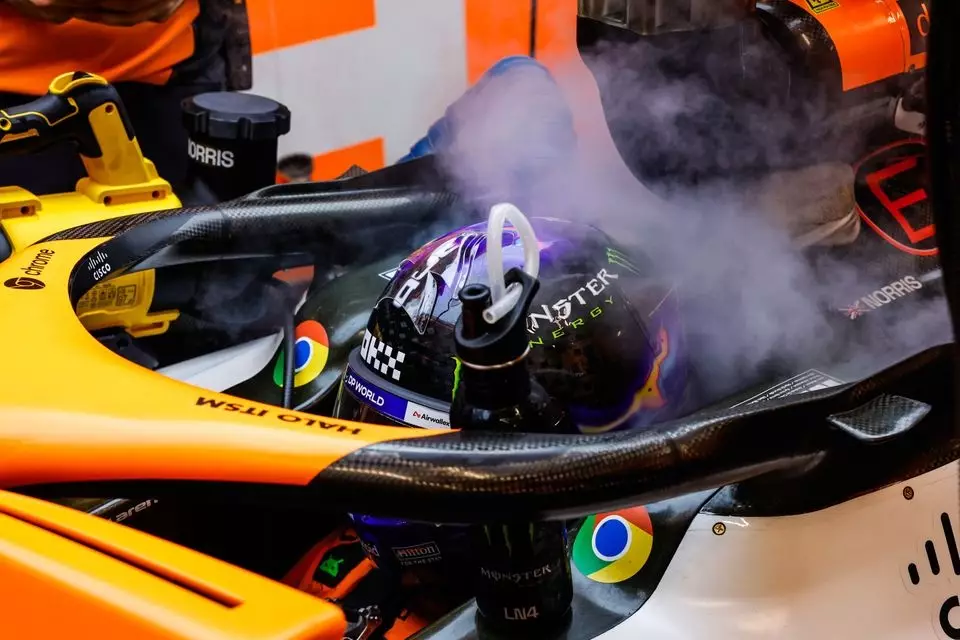As Formula 1 moves into a new era of technological advancements and safety protocols, the recently approved driver cooling kits emerge as a pivotal feature set for the 2025 racing season. This initiative, implemented by the FIA’s Formula 1 Commission, reflects an essential response to the challenges faced by drivers in extreme heat conditions, especially highlighted during the 2023 Qatar Grand Prix.
The critical discussions surrounding driver fatigue and heat-related ailments gained momentum after several racers struggled with symptoms of heat exhaustion following a grueling race in Qatar. The rigorous demands of the sport, coupled with rising global temperatures, necessitated immediate action to safeguard the well-being of drivers. Following these events, both the FIA and the F1 teams acknowledged the pressing need for innovative cooling solutions. What initially began as the proposal for a comprehensive air conditioning system evolved into a more streamlined driver cooling kit, designed to function without a conventional AC unit. This decision not only simplifies the technology involved but also enhances reliability and efficiency during races held in sweltering conditions.
The new cooling systems will be employed selectively based on specific temperature thresholds, ensuring that the implementation aligns with safety regulations while not overly burdening the teams with additional weight unless the weather explicitly requires it. This strategy aims to strike a balance between maintaining competitive performance and prioritizing driver health.
Beyond the innovations in thermal management, important changes to grid protocols were discussed during the Commission meeting. A notable incident involving Williams driver Alex Albon during the Brazilian Grand Prix underscored the necessity for clearer procedures regarding grid adjustments. When Albon had to withdraw from the race due to an accident earlier in the day, it highlighted gaps in the existing protocol that left his vacated spot on the grid, an inconsistency that could disrupt race dynamics and fairness.
The FIA’s new approach establishes a firm timeline for finalizing the starting grid, mandating adjustments for any withdrawn cars up to 75 minutes before the race. This enhanced rule aims to maintain the integrity of the competition while improving the overall flow of race day operations. By ensuring that teams’ abilities to compete reflect real-time conditions, the FIA aligns its regulations with both safety and competitive integrity.
In addition to these developments, the meeting also addressed the growing emphasis on sustainability within the sport. The FIA has approved expanded exemptions against the cost cap for expenditures related to sustainability initiatives. This aligns with the broader trend in global sports and industry towards eco-conscious practices. F1’s commitment to sustainability reflects an acknowledgment of its role in combating climate change, an increasingly pressing issue that resonates with fans and stakeholders alike.
As the 2026 technical regulations loom on the horizon, the FIA continues to refine its approach to enhance vehicle performance while ensuring that sustainability remains a priority. The discussions led by Nikolas Tombazis highlight the FIA’s confidence in these regulations being ready for approval, further emphasizing the commitment to advancing the sport in a responsible manner.
Moreover, the FIA is evolving its regulations to ensure they reflect the diverse and inclusive ethos of modern society. The revision of sporting regulations to incorporate gender-neutral language marks a progressive step towards inclusivity. Such changes not only enhance the relevance of the regulations but also promote a culture that values diversity within motorsport, aligning with global efforts to create more equitable environments across various sectors.
The FIA Formula 1 Commission’s recent resolutions pave the way for a more adaptable, competitive, and inclusive future for the sport. The initiatives surrounding driver cooling systems, grid management, financial sustainability, and inclusive language represent a multifaceted approach to addressing contemporary challenges. These measures ensure that Formula 1 remains at the forefront of innovation, prioritizing not just speed and competition but also the health and well-being of its athletes, alongside a commitment to a sustainable future.


Leave a Reply